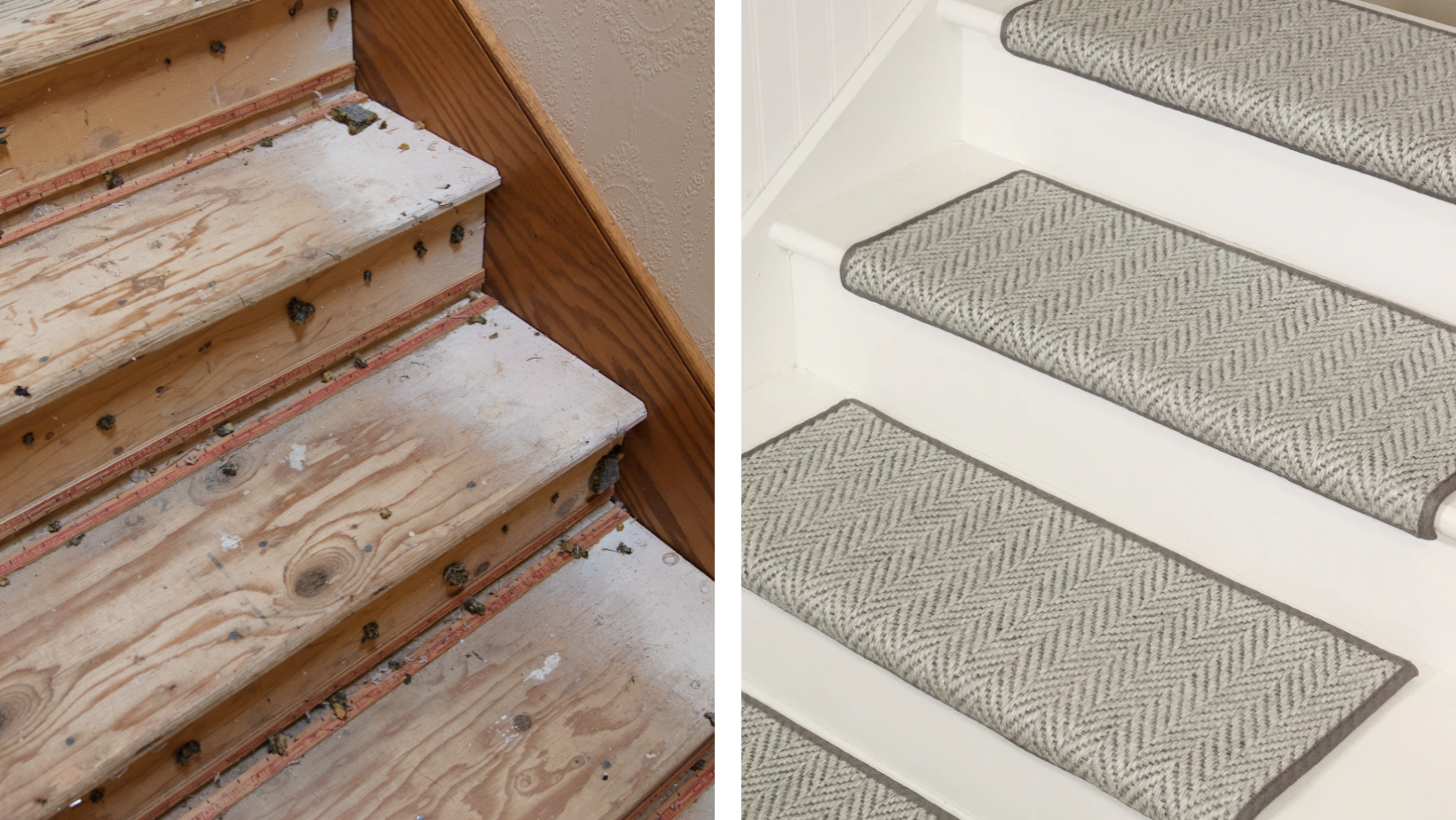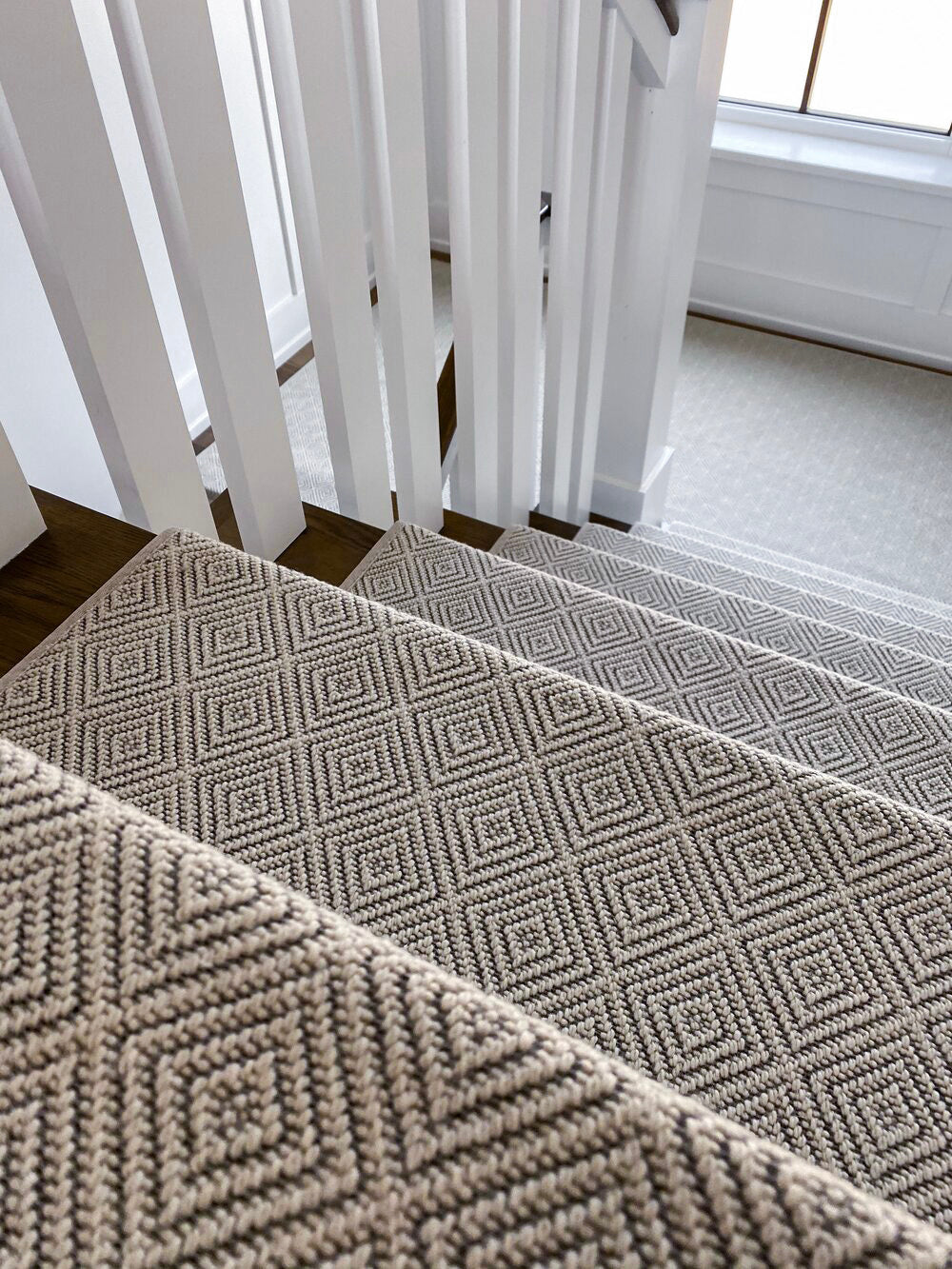Tired of looking at worn-out stairs or worried about slips and falls at home?
Indoor stair replacement is the best way to upgrade both the safety and style of your staircase without a full renovation.
Whether you’re updating old wood, installing new materials, or adding carpet stair treads, this process offers a high-impact improvement for any home.
In this guide, you’ll learn how to remove old treads, install tile or new surfaces, and add stylish finishing touches like carpet stair treads for added traction.
We’ll also walk you through whether to DIY or hire a professional, plus give tips for smart upgrades that elevate your space.
By the end, you’ll feel confident tackling your own indoor stair replacement with clarity and ease.
Why Replace Indoor Stairs?
Stairs get used every single day.
That means over time, treads wear down, finishes fade, and safety becomes a concern—especially for homes with little feet or paws racing up and down.
Upgrading your stairs:
-
Reduces slip risk
-
Updates outdated finishes
-
Adds warmth and charm
-
Increases home value
It’s a high-traffic spot that deserves just as much attention as any room in your house.
If you’re already thinking about a home stair replacement, you’re likely noticing scuffs, noise, or steps that just don’t feel as secure as they used to.
Indoor Stair Replacement vs. Full Stair Rebuild
Before jumping into your project, it’s helpful to know what kind of stair upgrade you really need.
A full stair rebuild usually means structural work—changing the layout, moving the staircase, or tearing it down to the stringers.
An indoor stair replacement focuses on aesthetic and surface-level changes:
-
Swapping out treads
-
Updating risers
-
Installing new surface materials like tile or carpet stair treads
Most homeowners don’t need a full rebuild.
A surface replacement gets the job done faster, cleaner, and more affordably.
Removing Old Wooden Treads
Before the beauty comes the prep.
Removing old treads is your first step.
What You’ll Need
-
Pry bar
-
Hammer
-
Utility knife
-
Gloves
-
Safety goggles
-
Dust mask
How To Do It
-
Carefully remove the nosing (the overhang) using your pry bar and hammer.
-
Pull up the wooden tread from the stair frame.
-
Remove leftover nails or staples.
-
Clean the area thoroughly so it’s ready for whatever comes next.
Safety Tip: Protect yourself with gloves, goggles, and a dust mask—wood dust and old adhesives can be rough on the lungs and eyes.
This is a critical part of any home stair replacement project.
Don’t skip prep work—it sets the tone for everything else.
Installing Tile for a Fresh, Modern Look
Tile brings a sleek, durable finish to indoor stairs.
It’s ideal for modern homes and high-use staircases.
Choose the Right Tile:
Go for non-slip, floor-rated tiles only. Safety always comes first.
Prep Work
-
Clean the stair base
-
Measure and cut each tile to size
-
Dry-fit before gluing down
Installation Steps
-
Spread thin-set mortar evenly.
-
Press the tile into place, starting from the bottom step up.
-
Allow time to set and dry, following your product instructions.
Tile makes a bold statement—and when installed correctly, it’ll last for years.
It’s a popular option for indoor stair replacement when homeowners want a permanent, high-end finish.
Add Carpet Stair Treads for Comfort and Safety
Want a softer touch? Carpet stair treads are a smart, stylish choice.
They’re especially great for homes with toddlers, seniors, or pets.
Why Carpet Treads?
-
Added traction = fewer slips
-
Cushioned comfort underfoot
-
Warm, inviting design element
-
Easy to switch out when it’s time for a refresh
Carpet treads offer a best of both worlds solution during any home stair replacement—whether you’re covering up worn wood or softening the look of tile.
How To Choose
Pick durable, non-slip materials that suit your home’s palette. Earth tones, textures, and natural weaves are trending.
Simple Installation:
-
Clean each step.
-
Use double-sided carpet tape or stair-safe adhesive.
-
Press each tread firmly into place.
It’s a five-minute update that changes the whole look of your staircase.
Painting or Staining Stair Risers
Stair risers (the vertical back part of the step) are often forgotten—but painting or staining them can bring balance and polish to your stair upgrade.
Consider These Options:
-
Crisp white paint for a clean, airy look
-
Bold colors for a pop of personality
-
Wood stains that match your flooring
This extra step adds contrast and makes the treads pop—whether you’re installing tile or applying carpet.
Indoor Stair Replacement Materials: Comparing Options
There’s no one-size-fits-all when it comes to home stair replacement.
Each material brings its own vibe—and its own maintenance needs.
Most Common Indoor Stair Surface Options
-
Hardwood: Classic, warm, long-lasting. Needs sealing and regular maintenance.
-
Laminate: Affordable, scratch-resistant. Less durable over time.
-
Tile: Stylish and easy to clean. Harder underfoot and colder in the winter.
-
Carpet: Cozy, safe, sound-dampening. Needs regular vacuuming and replacement.
-
Vinyl: Waterproof and budget-friendly. Softer than tile but less warm than carpet.
When choosing materials, think about your daily routines, pets, kids, and how much time you want to spend on upkeep.
Each step should feel like it fits your life—not just your Pinterest board.
Cost Breakdown: What to Expect
The cost of indoor stair replacement depends on the materials, size of the staircase, and whether you DIY or hire out.
Basic Averages
-
DIY Carpet Stair Treads: $10–$25 per tread
-
Hardwood Treads (installed): $100–$200 per tread
-
Tile (installed): $150–$250 per step
-
Paint/Stain: $50–$100 total (DIY)
For a full staircase, expect to spend between $300 and $2,000, depending on choices.
Doing it yourself can save you hundreds—but only if you’re confident with the tools and time involved.
Many families opt for a hybrid approach—hiring a pro for structural steps and adding carpet treads themselves.
It’s a smart way to balance style and budget during a home stair replacement.
DIY vs. Hiring a Pro: What’s Right for You?
Both paths can lead to a beautiful outcome—what matters most is your comfort level.
DIY Pros
-
Cost-effective
-
Flexible timing
-
Rewarding for hands-on homeowners
DIY Cons
-
Steeper learning curve
-
Time-consuming
-
Tool investment required
Hiring a Pro
-
Guaranteed expertise
-
Faster turnaround
-
Less stress on your end
If you're confident with tools and ready to take your time, go DIY.
Otherwise, it’s worth the investment to have a professional knock it out.
Not sure which path to take? That’s okay—just imagine how satisfying it’ll feel to walk on stairs you helped bring to life.
Smart Upgrades to Add During Indoor Stair Replacement
When you’re already mid-project, it's a great time to make a few small additions that can deliver big results.
Consider:
-
LED Stair Lights: For visibility at night
-
Stair Runners: For a continuous carpet look (especially on longer staircases)
-
Wall Molding or Trim: For architectural detail
-
Handrail Upgrade: Swap for wood, wrought iron, or modern metal
These little touches turn your stairwell into a showpiece, not just a hallway shortcut.
Stepping It Up
An indoor stair replacement might seem small—but it makes a big impact.
By refreshing your stairs with tile, hardwood, or soft carpet stair treads, you’re adding safety, beauty, and personality to a space that connects your whole home.
Whether you tackle it yourself or call in a pro, this upgrade pays off every step of the way.
A thoughtful home stair replacement gives your family a safer space to move, play, and make memories—without breaking the bank or calling in a design team.
Need help choosing the right stair tread? Want to explore custom sizes and colors?
We’re just a click away—and we’d love to help you design something that fits your family perfectly.
-
Website: https://oakvalleydesigns.com/
-
Phone: 706.331.0315
-
Email: info@oakvalleydesigns.com
-
Address: 30 River Ct SW Bldg E Cartersville, Ga 30120



